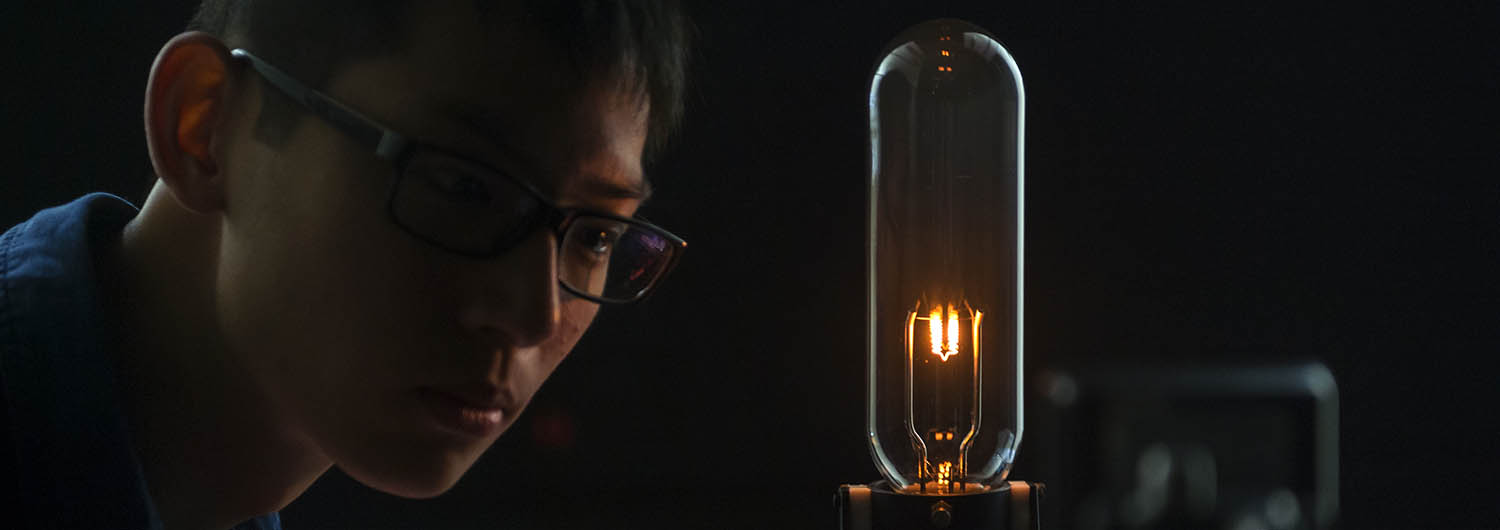Candela

The Unit – candela, cd (kānara)
The SI unit for luminous intensity (the brightness of a source of visible light) is the candela (cd), which gets its name from the fact that, for much of history, ‘standard candles' were used to measure the intensity of light.
The candela is the only SI base unit intended to quantify the human perception of an objective physical reality. It allows us to measure the effectiveness of lighting systems made for the human eye. Its definition therefore requires knowledge of the spectral sensitivity of the human visual system, as well as a standard reference light source. The definition of the standard source is given by the International Committee for Weights and Measures (CIPM):
“The candela is the luminous intensity, in a given direction, of a source that emits monochromatic radiation of frequency 540 x 1012 hertz and that has a radiant intensity in that direction of 1/683 watt per steradian.”
The relative response of the eye to visible wavelengths, also known as the photopic response curve, is a tabulated function adopted by the Commission Internationale de l’Eclairage (CIE) in 1924. Together, the contributions of the CIPM and CIE allow the luminous intensity of any source to be uniquely specified.
The candela, however, is not the only unit that a photometry and radiometry laboratory realises and disseminates. While the candela describes how bright a source of light will be when looking directly at it from a particular direction, other photometric quantities are sometimes more useful. These include illuminance, measured in lux, which describes how bright a surface illuminated by a source will be, and luminous flux, measured in lumens, which quantifies the amount of visible light emitted by a source.
Quantification of light is not only important for visual perception of sources. Our skin, for example, is sensitive to light across the solar spectrum, from UV to infrared, as is almost every other biological system on Earth. Furthermore, light has become a tool – for analysis of chemical samples, precision machining, water treatment, surgery, non-destructive testing, monitoring our planet and for communications.
In these contexts, and many more, traceable measurements are required for control and to inform decision making. Therefore, radiometric counterparts of the photometric quantities are maintained at MSL, such as radiant intensity, irradiance and radiance. These quantities may be given spectrally at identified wavelengths, or integrated over action spectra of interest, such as the erythemal function, which describes the spectral response of human skin to ultraviolet radiation.
Further, to understand and influence the effects of sources of light, quantification of the interaction of light with materials is the next piece of the puzzle. This is done using the spectrophotometric quantities of reflectance, transmittance and absorbance. Measurements of such quantities are relied upon in industries as diverse as product sorting, printing, computer-generated imagery, horticultural fabrics and food packaging.
Technical Capability
We are leading experts in photometry, radiometry and spectrophotometry. We can advise on the best measurements to support your decision making as well as identify and eliminate sources of error in measurement systems. Our team can calibrate and characterise light-measuring instruments, light sources and materials. Details of our services can be found here.
Specific capabilities include traceable goniospectrophotometry, photopic filter design and manufacture, single- and few-photon detector characterisation, absolute radiometry (cryogenic radiometer), regular or diffuse reflectance and transmittance, including transmittance haze, temperature control of detectors, UV ageing of materials, and colour and appearance measurement.
Our Research
Our research covers a wide range of topics, but our team is currently pursuing work in the following areas:
- Photobiological safety of light sources.
- Few photon and small area detector calibration.
- Polarisation-dependence of bidirectional reflectance distribution function (BRDF) measurement.
- Photopic filter and photometer design.
- Statistical analysis of international intercomparison results.
Relevant Publications
A Koo. The measurement of light: ‘the’ candela and New Zealand’s candela. New Zealand Science Review Vol 72 (2) 2015 p. 45
Go to our Light calibration & services page
View a short video about the Candela here(external link).

